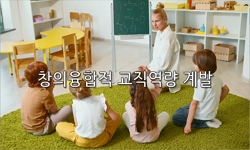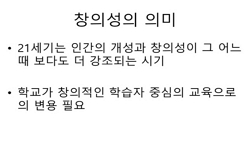This study provides a comprehensive analysis of the planning and implementation process of the 'Kim Hong Shin Literary Museum,' which is based on literary arts. Opened in 2019, the museum offers a multi-faceted interpretation of the life and works of ...
http://chineseinput.net/에서 pinyin(병음)방식으로 중국어를 변환할 수 있습니다.
변환된 중국어를 복사하여 사용하시면 됩니다.
- 中文 을 입력하시려면 zhongwen을 입력하시고 space를누르시면됩니다.
- 北京 을 입력하시려면 beijing을 입력하시고 space를 누르시면 됩니다.

창의적 전시기획의 구성요소 연구 - 김홍신문학관 사례분석을 중심으로 - = A Study on the Components of Creative Exhibition Planning - Focusing on the Case Analysis of Kimhongshin Literary Museum -
한글로보기https://www.riss.kr/link?id=A108769434
-
저자
이유주 (중앙대학교 일반대학원 문화연구학과 강사)
- 발행기관
- 학술지명
- 권호사항
-
발행연도
2023
-
작성언어
Korean
-
주제어
Literary Museum ; Exhibition Planning ; Convergence ; Multidisciplinary ; Creativity ; 문학관 ; 전시기획 ; 융합 ; 다학제 ; 창의성
-
등재정보
KCI등재
-
자료형태
학술저널
-
수록면
441-459(19쪽)
- 제공처
-
0
상세조회 -
0
다운로드
부가정보
다국어 초록 (Multilingual Abstract)
This study provides a comprehensive analysis of the planning and implementation process of the 'Kim Hong Shin Literary Museum,' which is based on literary arts. Opened in 2019, the museum offers a multi-faceted interpretation of the life and works of the author Kim Hong Shin through the re-creation of various art genres, presenting these in an immersive exhibition format. The research is structured into three major parts: 1) theoretical discussion on the visualization of literary works and creative exhibition planning, 2) analysis of the planning objectives, design process, and actual outcomes of the Kim Hong Shin Literary Museum, and 3) identification of key components of creative exhibition planning based on the features of the museum. Through this investigation, the primary elements of creative exhibition planning have been identified as identity, thematic focus, integrity, organicity, spatiality, consistency, symbolism, uniqueness, differentiation, sustainability, flexibility, artistic collaboration, re-creation, plurality, diversity, sensory experience, integration, transition, expansion, synthesis, three-dimensionality, multi-facetedness, layering, interaction, community, originality, monumentalism, locality, and evocation. These elements are applicable to other exhibition planning contexts as well. The findings of the study also suggest that the literary museum can go beyond simple text-based representation to become a comprehensive treasury of cultural arts, reconstituted through interactions with various art genres and mediums, local characteristics, the individual experiences of the author, and invisible social, political, and historical contexts. Additionally, the role that science can play in the fusion and transition between different art forms was also confirmed.
동일학술지(권/호) 다른 논문
-
Green Fashion: Exploring on How Sustainable Jewelry Design Reshapes Lifestyle Brands
- 한국전시산업융합연구원
- 맹환
- 2023
- KCI등재
-
이미지 기반 AI 모델의 품질 고도화를 위한 이미지 증강 및 테스트 방법의 융복합 연구
- 한국전시산업융합연구원
- 서정민
- 2023
- KCI등재
-
스토리텔링을 기반으로 한 푸자좡(蒲家庄)의 문화 관광전략 개발 연구
- 한국전시산업융합연구원
- 리우레이
- 2023
- KCI등재
-
지속가능한 융합디자인 재료에 관한 연구 - 대나무를 중심으로 -
- 한국전시산업융합연구원
- 우치
- 2023
- KCI등재




 DBpia
DBpia






